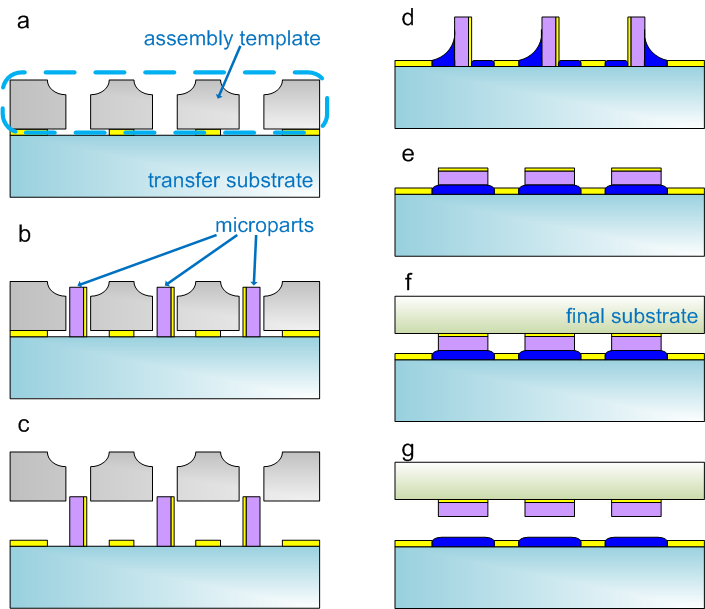Current Projects
Template-based Self-assembly of Microparts
Team Members
Ji Hoo, Rajashree Baskaran, Karl F. Böhringer
Research
For very high device coverage and components adverse to fluidic environments, we investigate microscale self-assembly with the use of assembly templates.
We developed an analysis framework of hardware and software components to optimize the assembly process by studying the motion of micro-components under various stimulus and environmental conditions. Based on emphirical data, we developed upon the self-assembly - chemical kinetics analogy, and introduced the concept of catalytic components which promotes assembly processes. Also, we developed a component-motion control regime which allows us to precisely manipulate the movement of our microparts; this ability allowed us to develop assembly processes that achieves 100% assembly.

Figure 1: Full assembly process flow: a. mount assembly template on a gold patterned transfer substrate; b. assemble parts; c. remove template; d. apply moisture; e. vibrate setup gently to have parts fall on hydrophilic side and self align; f. attach parts to destination substrate/device; g. complete process by removing assembled substrate/device from transfer substrate.

Figure 2: Assembled microparts standing on sides after assembly template has been removed.
